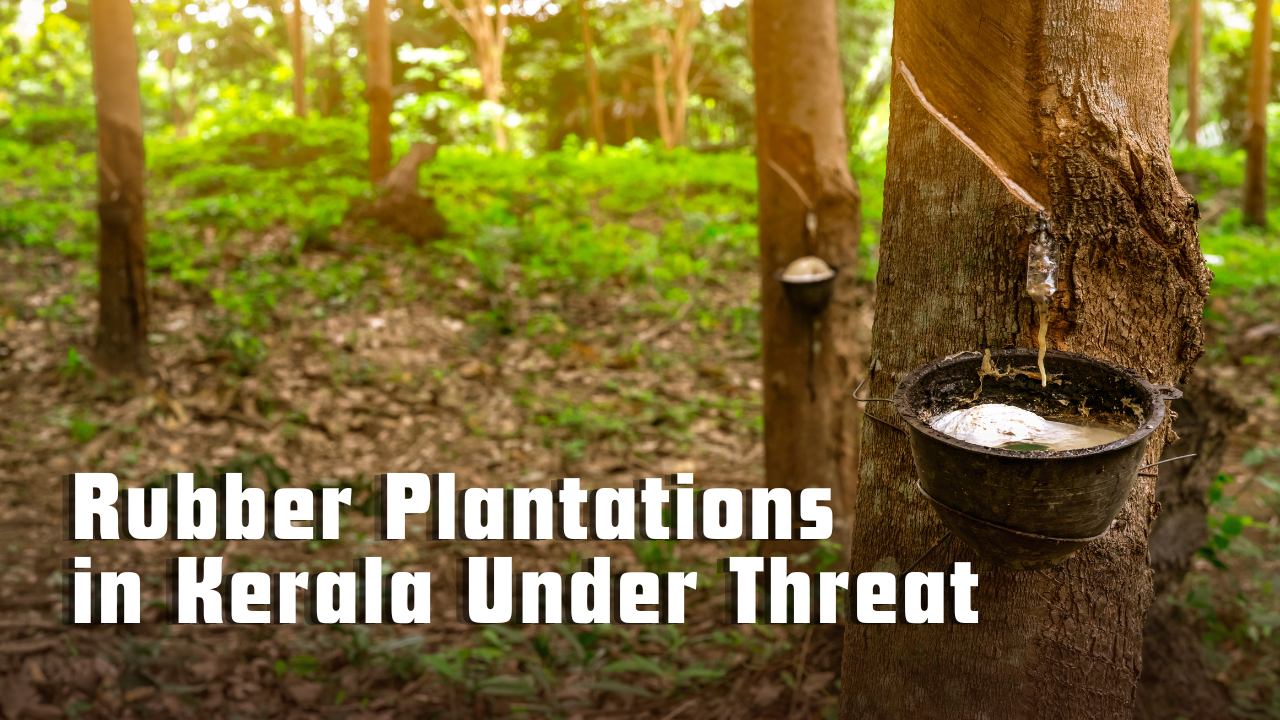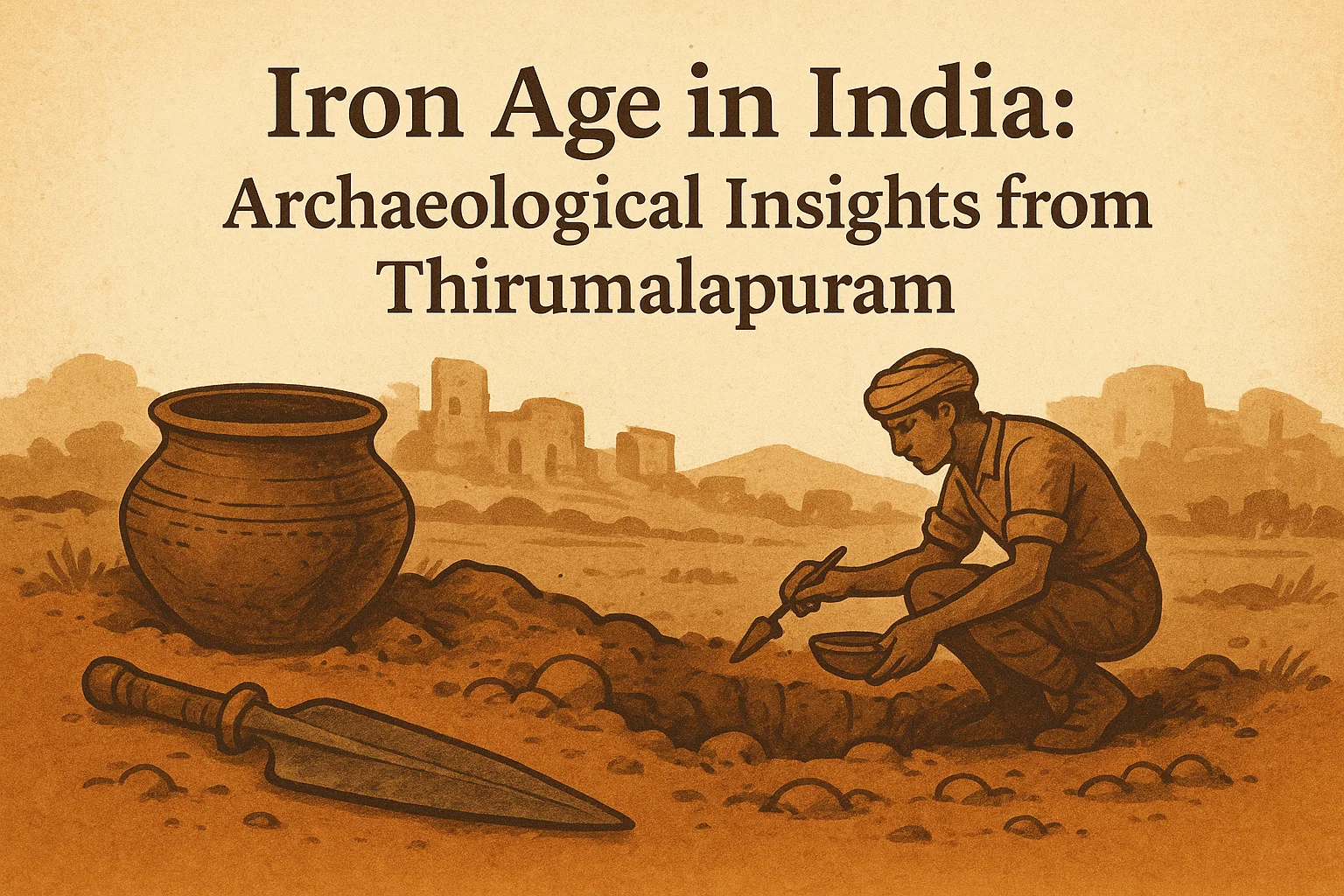Font size:
Print
Rubber Plantations in Kerala Under Threat
A beetle-fungi combo threatens plantations in rubber capital Kerala
Context: Rubber plantations in Kerala are under severe threat due to an attack by an invasive ambrosia beetle (Euplatypus parallelus) and its mutualistic fungal partners.
Background and Identification
- Recent findings by the Kerala Forest Research Institute (KFRI) in Thrissur have revealed that rubber trees in the Irrity-Kannur region are under attack by ambrosia beetles that share a mutualistic relationship with two fungal species: Fusarium ambrosia and Fusarium solani.
- This beetle-fungus alliance has resulted in severe leaf fall, trunk drying, and even tree death.
- The beetles bore into trees to create galleries, where they farm the fungi, which weaken the wood and block xylem vessels. The beetles and their larvae then feed on fungal mycelia inside these tunnels.
Overview of Rubber Cultivation in Kerala
- Origin: Rubber (Hevea brasiliensis), native to Brazil, was introduced to Kerala by British planters in the late 19th century.
- Ideal Conditions: Kerala’s tropical climate—high humidity, 25–35°C temperature, and 200–300 cm rainfall—makes it perfect for rubber cultivation.
- Major Districts: Kottayam, Kollam, Ernakulam, Kozhikode, Thrissur, and Idukki are key rubber-producing regions.
Scientific Findings
- Unlike other species, this ambrosia beetle lacks mycangia—specialised sacs for transporting fungi—raising questions about how fungal partners coexist inside the insect.
- The fungi release enzymes that degrade wood and compromise the tree’s vascular system. Latex oozing from bark was among the first symptoms observed by farmers and reported via the Tree Health Helpline.
Biology and Behaviour of Ambrosia Beetles
- Native to Central and South America, ambrosia beetles were first reported in India in 2012 (in cashew trees in Ponda, Goa).
- They typically target stressed, dying, or dead trees, drawn to ethanol emissions from such trees. Though they do not feed on wood, they play the role of fungus farmers.
- Euplatypus parallelus is capable of infesting over 80 species of broadleaf trees, including cashew, teak, coconut, mango, coffee, and rubber.
Challenges in Controlling the Infestation
- Systemic infection by Fusarium fungi is particularly difficult to treat since they colonize the xylem, a part deep inside the plant.
- Standard fungicides and insecticides are often ineffective once the infection progresses.
- Sporulation of the fungus further weakens trees, leading to irreversible damage.
- The fungi are also opportunistic pathogens in humans and animals, posing occupational risks to plantation workers.
Economic and Ecological Impact
- India is the world’s sixth-largest producer of rubber and the second-highest in productivity.
- Kerala contributes to 90% of the country’s rubber production, accounting for 72% of the rubber cultivation area.
- Damage to rubber trees affects latex yield, reducing farmers’ income and impacting associated industries.
- The beetle-fungus threat now extends to economically significant species like coffee, coconut, mango, and cashew, raising concerns of widespread agricultural losses.
Recommendations and Policy Suggestions
- Research-Based Approaches: Antagonistic fungi and microbial consortia could offer sustainable, long-term solutions. Fungal treatments must be customised by geography, especially given the limitations of global phytosanitary measures in South India’s broadleaf plantations.
- Field-Level Control Measures: Trapping beetles, removing infected parts, and burning or chipping away infected wood. Preventive antifungal treatments, especially before peak infestation seasons.
- Future Monitoring and Collaboration: Urgent need to track new beetle-fungal partnerships, which could expand host ranges. Interdisciplinary collaboration between ecologists, mycologists, policymakers, and local farmers. Develop an India-specific action plan for pest and pathogen management in plantation ecosystems.
Subscribe to our Youtube Channel for more Valuable Content – TheStudyias
Download the App to Subscribe to our Courses – Thestudyias
The Source’s Authority and Ownership of the Article is Claimed By THE STUDY IAS BY MANIKANT SINGH





